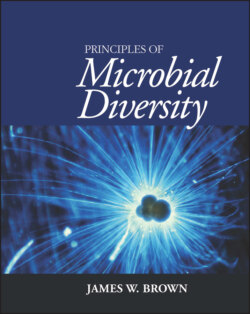Читать книгу Principles of Microbial Diversity - James W. Brown - Страница 13
Оглавление
In the well-known children’s story by Dr. Seuss, Horton the elephant discovers that a tiny speck of dust contains an entire world of creatures much too small for him to see.
SECTION I
Introduction to Microbial Diversity
It turns out that every speck of dust, every drop of water, every grain of soil, and every part of every plant and animal around us contain their own worlds of microbial inhabitants (facing illustration).
A very tiny fraction of these creatures can do us harm, causing misery, disease, and death, and these few creatures have given the microbial world a bad reputation. But the vast majority of microbes benefit us in essential ways that we fail to recognize. They created, and sustain, the world we live in. The famous paleontologist and evolutionary biologist Stephen J. Gould once wrote, “On any possible, reasonable, or fair criterion, bacteria are—and always have been—the dominant forms of life on Earth.”
Welcome to Principles of Microbial Diversity. In this book we explore, a little bit, the enormous range of biological diversity in the microbial world.
In the first section of the book, we establish a point of view from which to examine microbial diversity—call this the “phylogenetic perspective.” After some background material, this is primarily a problem-solving section, in which we learn how to construct and interpret evolutionary trees from DNA sequences. We finish up with a look at the universal “tree of life” constructed using this process.
In the second section, we climb around in this “tree of life,” looking at some examples of microbes on the major branches of the tree—sort of a stroll through the microbial zoo. We extract some conceptual lessons from each group, but this section of the course is mostly about establishing a base of knowledge about the microbial world.
In the third and fourth sections, we learn about how microbiologists are beginning to explore the universe of microbial diversity “in the wild.” We do this directly from published research papers, starting with how new organisms are identified (usually without being cultivated) and progressing in steps to broad surveys of entire microbial communities and attempts to get a handle on how specific kinds of organisms contribute to the ecosystem. This is the conceptual and synthetic portion of the book.
In the end, I hope you will have gained an appreciation for the “big picture” of the microbial world, an understanding of the power of the phylogenetic perspective, and a realization that the exploration of this world is just beginning, how this is being done, and the questions that drive this exploration.
We live immersed in an infinite sea of the infinitesimal. Let’s have a look.
